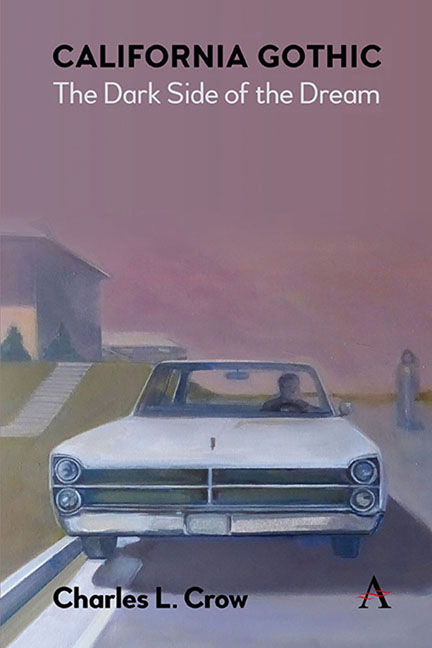Book contents
- Frontmatter
- Dedication
- Contents
- List of Figures
- Preface
- Acknowledgements
- 1 The Magic Island
- 2 Ambrose Bierce and San Francisco’s Gothic Frontier
- 3 Lost Coasts
- 4 Disease, Pandemics, and the Monstrous
- 5 The Shadow Line: Noir and California Gothic
- 6 California Ecogothic: What’s Buried in the Basement
- Works Cited
- Afterword
- Index
5 - The Shadow Line: Noir and California Gothic
Published online by Cambridge University Press: 27 March 2024
- Frontmatter
- Dedication
- Contents
- List of Figures
- Preface
- Acknowledgements
- 1 The Magic Island
- 2 Ambrose Bierce and San Francisco’s Gothic Frontier
- 3 Lost Coasts
- 4 Disease, Pandemics, and the Monstrous
- 5 The Shadow Line: Noir and California Gothic
- 6 California Ecogothic: What’s Buried in the Basement
- Works Cited
- Afterword
- Index
Summary
You can never know too much about the shadow line and the people who walk it …
—Raymond Chandler, The Long GoodbyeFilm noir, like the beautiful but deadly oleander bush, was a European import that took root in California and flourished.
Noir, which was named retroactively by French film critics Raymond Borde and Étienne Chaumeton (Fine in Crow, Companion to American Gothic p. 476), was a style that developed early in the silent era in Germany and Austria. Noir combined an expressionistic aesthetic involving deep shadows and odd-angle shots with a largely Gothic subject matter. Early noir films included such obviously Gothic titles as The Golem, Nosferatu, and The Cabinet of Dr. Caligari. When noir directors, including Paul Wegener, Fritz Lang, Robert Wiene, and F. W. Murnau, fled Nazi Germany in the 1930s, they joined other creative émigrés from Germany and Austria in Southern California. In Hollywood, the expat directors blended their noir aesthetic with plots drawn from hard-boiled crime fiction to create California film noir, which, as David Fine indicates, is “a twentieth-century manifestation of American Gothic, contemporaneous with Southern Gothic fiction” (p. 475).
The scripts for Hollywood film noir were often adaptations of hardboiled crime stories by such alumni of The Black Mask as Dashiell Hammett, James M. Cain, Horace McCoy, and Raymond Chandler. Studios, in fact, often employed the authors to adapt their fiction into screenplays. The resulting noir crime films are filled with Gothic tropes: masks and doubles, buried secrets, and the incursion of the past into the present. The ambiance of dread in these screenplays draws in part on the shared traumas of the twentieth century, the Great Depression, and the thirty-year war soon to enter its terrible second act (Scruggs pp. 123–37). But there were also local concerns coloring California noir, including the morbidity of a land of sunshine filled with the sick and the dying, as discussed in Chapter 6, the corruption of local politics and law enforcement that continued despite the reforms of the Progressive Era, and the sex scandals plaguing the film industry. These scandals, as catalogued by Kenneth Anger in his salacious history of Hollywood Babylon, were reflected in the erotic charge of many Hollywood movies, even during the era of the Hayes Act.
This chapter will use the term “noir” to describe both noir film and the fiction that exists symbiotically with it.
- Type
- Chapter
- Information
- California GothicThe Dark Side of the Dream, pp. 45 - 56Publisher: Anthem PressPrint publication year: 2024



